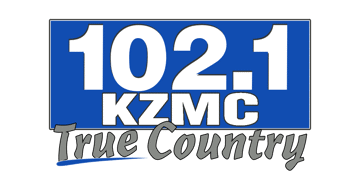Rural Mainstreet Economy Fell to 2024 Low

August 2024 Survey Results at a Glance:
For a 12th straight month, the overall Rural Mainstreet Index sank below growth neutral, according to bank CEOs in the region.
For the third time in the past four months, farmland prices sank.
Farm equipment sales sank for the 13th straight month.
Farm loan delinquency rates over the past six months climbed by an average of 1.1% across the region.
According to trade data from the International Trade Association, regional exports of agriculture goods and livestock for 2024, year-to-date, were down by $78.9 million, or 1.3%, from the same period in 2023.
OMAHA, Neb. (August 15, 2024) — For a 12th straight month, the overall Rural Mainstreet Index (RMI) sank below growth neutral, according to the August survey of bank CEOs in rural areas of a 10-state region dependent on agriculture and/or energy.
Overall: The region’s overall reading for August sank to 40.9 from 41.3 in July. It was the lowest reading since November of last year. The index ranges between 0 and 100, with a reading of 50.0 representing growth neutral.
“Weak agriculture commodity prices, sinking agriculture equipment sales and declining farm exports pushed the overall reading below growth neutral for the 12th straight month,” said Ernie Goss, PhD, Jack A. MacAllister Chair in Regional Economics at Creighton University’s Heider College of Business.
Jim Eckert, CEO of Anchor State Bank in Anchor, Ill. said, “The sad part is that most of our farmers will lose money or just break even due to poor commodity prices.”
Other comments from bankers for August:
Terry Engelken, Vice President of Washington State Bank in Washington, Iowa, reported that, “Turkey producers are feeling the pressure from lower prices.”
Jeff Bonnett, CEO of Havana National Bank in Havana, Ill. said, “Although year-over-year inflation is moving the right direction, the overall increase to inflation since pre-COVID days is taking a toll on rural America. I saw a study that the same items from a pre-COVID grocery receipt purchased here in 2024 went from $125 to over $400 now. By the time working folks in our area pay their utilities, groceries and fill the tank up as needed each month, there is little disposable income left for dining out, entertainment, and small business and crafts shopping.”
Larry Winum, CEO of Glenwood State Bank in Glenwood, Iowa, reported that, “Interesting how the federal debt now exceeds $35 trillion and neither presidential candidate or political party has proposed a plan to solve the problem. Very disappointing and alarming.”
This month, bankers were asked to compare the current business environment in their area to that prior to Covid-19. Approximately 22.8% reported business conditions were worse while 18.2% indicated business conditions were improved compared to pre-Covid. The remaining 59.0% indicated conditions had barely changed.
Jeff Bonnett, CEO of Havana National Bank in Havana, Ill. said, “In talking with our small business owners on Main Street, they are struggling.”
Farming and ranching land prices: For the third time in the past four months, farmland prices sank. The region’s farmland index fell to 45.5 from Julys 52.2. “Only 9.1% of bank CEOs reported that farmland prices expanded from July levels,” said Goss.
According to trade data from the International Trade Association, regional exports of agriculture goods and livestock for 2024 year-to-date were down $198 million, or 3.6%, from the same period in 2023.
Farm equipment sales: The farm equipment sales index for August slumped to 16.7, its lowest level since January 2017, and down from July’s 19.0. “This is the 13th straight month that the index has fallen below growth neutral. Higher borrowing costs, tighter credit conditions and weak grain prices are having a negative impact on the purchases of farm equipment,” said Goss.
Banking: The August loan volume index rose to a very strong 75.0 and was up from July’s 67.4. The checking deposit index slumped to 34.1 from 45.5 in July. The index for certificates of deposits and other savings instruments dropped to 52.3 from 65.9 in July.
Despite falling farm commodity prices and farm income, bankers, on average, reported loan delinquency rates had increased by only 1.1% over the past six months.
Bankers were asked to identify the greatest threat to regional banking operations over the next 12 months. Approximately 60.9% named falling farm commodity prices; 17.6% identified the Fed’s too high interest rates; 8.1% reported rising regulatory costs; 6.4% named low loan demand; and the remaining 8.1% identified other factors.
Hiring: The new hiring index for August dropped to 45.5 from 50.0 for July.
Confidence: Rural bankers remain very pessimistic about economic growth for their area over the next six months. The August confidence index slumped to 27.3 from 28.3 in July. “Weak agriculture commodity prices and farm exports, combined with downturns in farm equipment sales over the past several months, continued to constrain banker confidence,” said Goss.
Home and retail sales: After expanding to a strong 62.5 in June, the home sales index tumbled to July’s 33.3 and then rebounded to 50.0 in August. Likewise, retail sales in the region, much like that for the nation, were very weak with an August retail index of 38.6, the lowest reading since November 2020 and down from 39.1 in July.
“High consumer debt, elevated interest rates and weaker farm income are cutting into retail sales for the Rural Mainstreet Economy,” said Goss.
The survey represents an early snapshot of the economy of rural agriculturally- and energy-dependent portions of the nation. The Rural Mainstreet Index is a unique index covering 10 regional states, focusing on approximately 200 rural communities with an average population of 1,300. The index provides the most current real-time analysis of the rural economy. Goss and Bill McQuillan, former Chairman of the Independent Community Banks of America, created the monthly economic survey and launched it in January 2006.
Below are the state reports:
Colorado: The state’s RMI for August dropped to 51.1 from July’s 52.3. The farmland and ranchland price index for August fell to 51.2 from 54.6 in July. The state’s new hiring index sank to 50.2 from 53.1 in July. According to trade data from the International Trade Association, exports of agriculture goods and livestock for 2024 year-to-date were up by $131.2 million, or 212.7% from the same period in 2023.
Illinois: The state’s August RMI sank to 44.5 from July’s 44.8. The farmland price index dropped to 45.9 from 52.1 in July. The state’s new hiring index fell to 45.9 from 50.0 in July. According to trade data from the International Trade Association, exports of agriculture goods and livestock for 2024 year-to-date were down by $176.0 million, or 7.0% from the same period in 2023. Jim Eckert CEO of Anchor State Bank in Anchor reported that “In our part of Central Illinois the crops are looking good.”
Iowa: August’s RMI for the state slumped to 44.2 from 49.5 in July. Iowa’s farmland price index for August improved to 53.4 from 50.9 in July. Iowa’s new hiring index for August rose to 51.6 from 49.0 in July. According to trade data from the International Trade Association, exports of agriculture goods and livestock for 2024 year-to-date were down by $12.6 million, or 1.4% from the same period in 2023.
Kansas: The Kansas RMI for August declined to 34.2 from July’s 34.4. The state’s farmland price index decreased to 43.0 from 49.1 in July. The new hiring index for Kansas sank to 42.3 from 46.3 in July. According to trade data from the International Trade Association, exports of agriculture goods and livestock for 2024 year-to-date were up by $24.3 million, or 3.7% from the same period in 2023.
Minnesota: The August RMI for Minnesota dipped to 49.3 from 50.7 in July. Minnesota’s farmland price index dropped to 47.3 from 53.7 in July. The new hiring index for August decreased to 47.6 from 52.1 in July. According to trade data from the International Trade Association, exports of agriculture goods and livestock for 2024 year-to-date were down by $50.5 million, or 8.6% from the same period in 2023.
Missouri: The state’s August RMI climbed to 55.6 from July’s 51.2. The farmland price index for August rose to 53.9 from 53.2 in July. The state’s new hiring gauge for August was unchanged from July’s 55.9. According to trade data from the International Trade Association, exports of agriculture goods and livestock for 2024 year-to-date were down by $158.7 million, or 25.3% from the same period in 2023.
Nebraska: The Nebraska RMI for August sank to 36.5 from 38.6 in July. The state’s farmland price index for August slumped to 43.6 from 50.3 in July. Nebraska’s August new-hiring index sank to 43.1 from 47.8 in July. According to trade data from the International Trade Association, exports of agriculture goods and livestock for 2024 year-to-date were up by $136.8 million, or 39.3% from the same period in 2023.
North Dakota: North Dakota’s RMI for August increased to 40.3 from 38.1 in July. The state’s farmland price index declined to 44.7 from 46.5 in July. The state’s new hiring index declined to 44.7 from 50.2 in July. According to trade data from the International Trade Association, exports of agriculture goods and livestock for 2024 year-to-date were up by $33.0 million, or 7.3% from the same period in 2023.
South Dakota: The August RMI for South Dakota decreased to 44.6 from July’s 45.7. The state’s farmland price index dropped to 46.0 from 52.3 in July. South Dakota’s August new hiring index dropped to 42.4 from 50.3 in July. According to trade data from the International Trade Association, exports of agriculture goods and livestock for 2024 year-to-date were down by $4.4 million, or 6.1% from the same period in 2023.
Wyoming: The August RMI for Wyoming slumped to 35.3 from 38.2 in July. The August farmland and ranchland price index dropped to 43.3 from 50.2 in July. Wyoming’s new hiring index sank to 42.7 from 47.7 in July. According to trade data from the International Trade Association, exports of agriculture goods and livestock for 2024 year-to-date were down by $1.7 million, or 48.2% from the same period in 2023.
